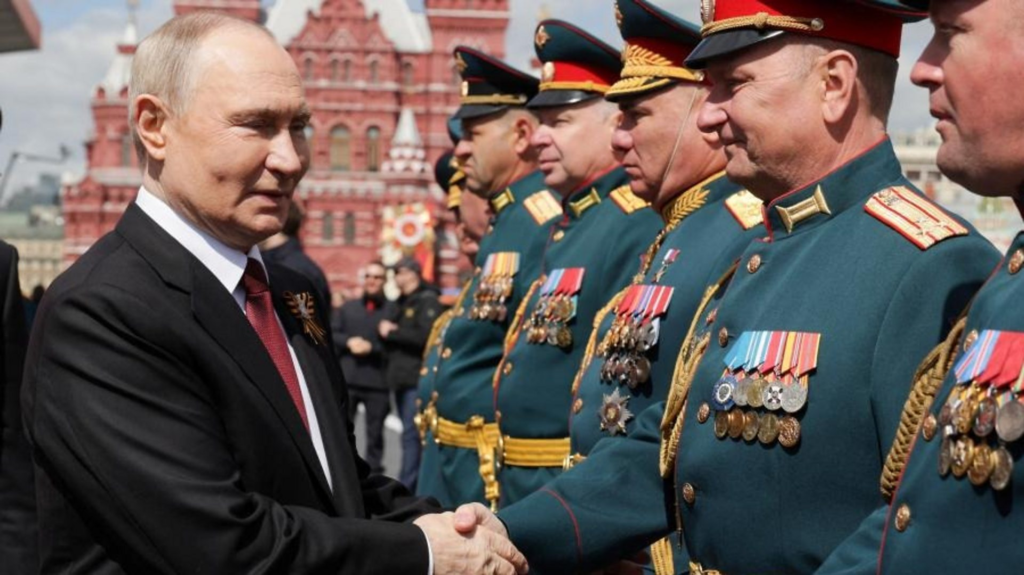Introduction
Each year, Russia’s Red Square parade marks a symbolic display of military strength and national pride. In 2025, President Vladimir Putin used the Victory Day stage to project resilience, assert political narratives, and send calculated signals to both domestic and international audiences. Here are the top three takeaways from the parade that reveal deeper geopolitical implications.



1. A Leaner Military Display with Symbolic Weight
Unlike past grandiose parades, this year’s Red Square procession was notably scaled back in terms of equipment and manpower. Just a single Soviet-era T-34 tank rolled across the square, a stark contrast to the usual lineup of modern military vehicles. Yet, this minimalism was deliberate. The presence of the T-34 symbolized Russia’s enduring victory in World War II while subtly acknowledging the economic and logistical strains of the ongoing war in Ukraine.
Despite the reduced hardware, the display still carried immense symbolic power. Soldiers marched in tight formation, and the color guard bore the Soviet and Russian flags—emphasizing unity and historical continuity. This choice reinforced the Kremlin’s narrative of resilience and defiance amid international sanctions and military challenges.
2. Putin’s Speech Emphasized Existential Struggles
In his address, Putin framed Russia as under siege from Western forces, reiterating a familiar but intensified narrative. He accused the West of provoking conflict and attempting to rewrite history, positioning Russia as a defender of traditional values and global stability.
The speech emphasized that the “fate of the world” rests on Russia’s shoulders—rhetoric designed to galvanize domestic support while unnerving adversaries abroad. By invoking existential themes, Putin justified the country’s continued mobilization and framed the Ukraine war as part of a larger civilizational struggle.
3. International Isolation on Full Display
Previous parades often featured foreign dignitaries and allied leaders, but this year’s event was a closed affair. Few international guests attended, highlighting Russia’s growing diplomatic isolation. Notably, there were no prominent leaders from BRICS or Central Asia in attendance—an absence that underscored Russia’s shrinking sphere of influence.
This visual of isolation was likely intentional, projecting an image of self-reliance and stoic nationalism. However, it also illustrated the tangible consequences of Russia’s geopolitical decisions, especially regarding its full-scale invasion of Ukraine and the resulting sanctions and diplomatic fallout.
Conclusion
Putin’s 2025 Red Square parade was a carefully staged performance that revealed much about Russia’s current posture. From a minimal but symbolic military display to rhetoric steeped in existential struggle and signs of global estrangement, the parade served as a mirror for Russia’s domestic and foreign policy realities.
While stripped of its past grandeur, the event communicated a clear message: Russia remains defiant, even if increasingly alone.
Read more: Russia Seizes Ukrainian Homes in Mariupol









